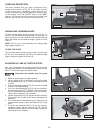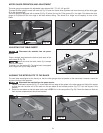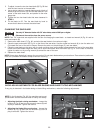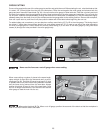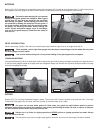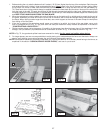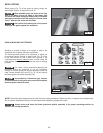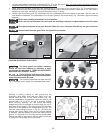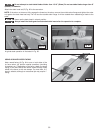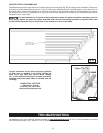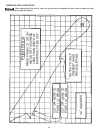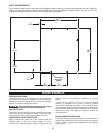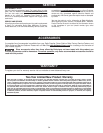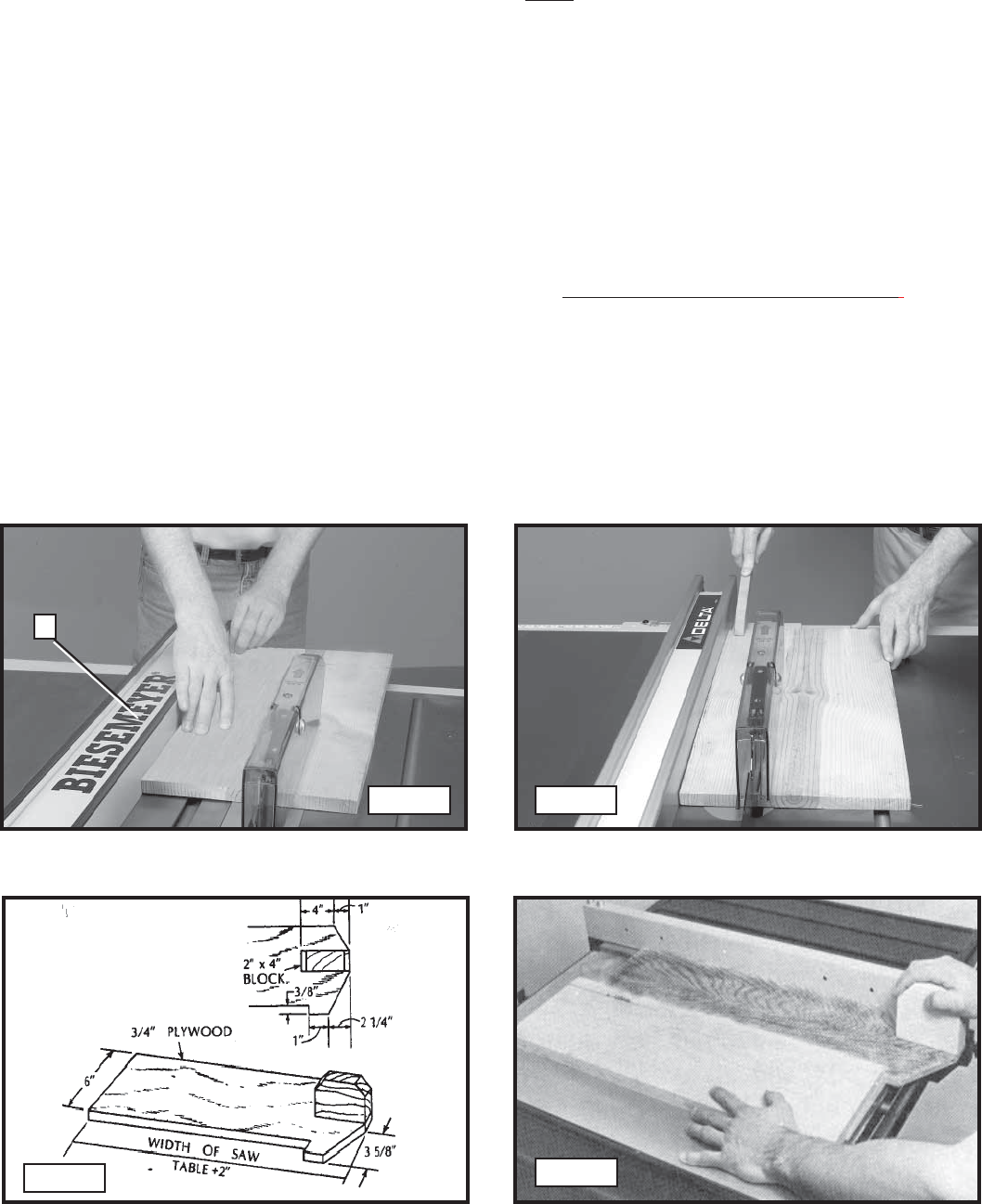
27
A
1. Before starting the cut, raise the blade so that it is about 1/8” (3.2mm) higher than the top of the workpiece. Start the motor
and advance the work, holding it down and against the fence. Never stand in the line of the saw cut when ripping. When
the rip width is 6 inches or wider, hold the work with both hands and push it along the fence and into the saw blade (Fig.
70). Feed force when ripping should always be applied between the saw blade and the fence. Never pull the workpiece
from the back of the saw. The work should then be fed through the saw blade with the right hand. Keep pressure on the
workpiece against the fence and down on the saw table. Ensure that you have adequate outfeed support for the workpiece
and KEEP YOUR HANDS AWAY FROM THE SAW BLADE.
2. When the workpiece is past the blade, the work will either stay on the table or tilt up slightly and be caught by the end of
the guard. Alternately, the feed will continue to the end of the table, and be lifted and brought along the outside edge of
the fence. When ripping boards longer than three feet, use a work support at the rear of the saw to keep the workpiece
from falling off the saw table.
3. If the size or shape of the workpiece would cause your hands to be within six inches of the saw blade, use a push
stick to complete the cut (Fig. 71) The push stick can easily be made from scrap material as explained in the section
“CONSTRUCTING A PUSH STICK.”
”
4. Ripping narrow pieces can be dangerous. If possible, rip the narrow piece from the larger piece. If the workpiece is short
enough, use a pushboard. (A pushboard can be constructed as shown in Fig. 72 and used as shown in Fig. 73.)
NOTE: In Fig. 73, the guard and splitter have been removed for clarity. Use the guard and splitter when ripping.
5. For longer pieces, use one or more pushsticks to avoid placing your hands between the fence and the blade. Always use
care to avoid binding narrow strips between the anti-kickback pawls and the splitter.
NOTE: Some special operations (moulding cutterhead, etc.) require the addition of an auxiliary wood facing to the fence, as
explained in the section “USING AUXILIARY WOOD FACING,” and use of a push stick.
Fig. 70
Fig. 71
Fig. 72
Fig. 73




